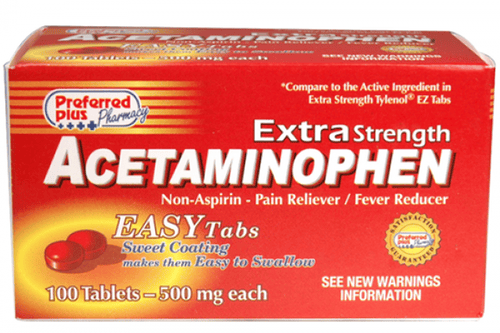This is an automatically translated article.
Cluster headache is a cyclical disease with sudden, severe pain symptoms. The root cause is thought to be hypothalamic influence. In addition, drugs and alcohol can also contribute to the severity of cluster headaches.1. Cluster headache overview
Cluster headaches are said to be the most painful of all types of headaches. It occurs in stages, often appearing in the middle of the night and is intense in or around one eye or one side of the head.
Cluster headaches in the paroxysmal phase are characterized by high frequency and persisting from several weeks to several months. This is followed by a period of remission, when the headache temporarily stops. Remission can last for months or even years.
Cluster headaches are rare and not life-threatening. Currently, treatments are mainly focused on reducing pain duration, severity, and frequency.

Đau đầu chùm gây ảnh hưởng nghiêm trọng đến sức khỏe cũng như cuộc sống của người bệnh
2. Symptoms of cluster headache
2.1. Common signs and symptoms
Cluster headaches come on suddenly, often without warning, although some people still experience nausea and dizziness that mimic the warning signs of a migraine. Common cluster headache signs and symptoms include:
Severe pain usually located in, inside or around one eye, pain that can spread to other areas of the face, head and neck . Pain on one side of the head Restlessness A lot of tears Redness of the eyes on the painful side Congestion or runny nose on the painful side Sweating on the forehead or face on the painful side Pale or flushed facial skin Under eye circles on the painful side Collapse eyelid on the side of the pain Cluster headaches are often more severe than migraines. It can cause the person to sit with their head in their hands when the pain increases suddenly. Besides, these two types of headaches also have some similarities such as sensitivity to sound and light.
2.2. Features of the paroxysmal phase in cluster headache
The exacerbation of a cluster headache usually lasts from a few weeks to a few months, even a year. Cluster headaches often occur at specific times of the year, such as each spring or each fall.
The pain may temporarily stop up to a year before another cluster headache occurs. Chronic cluster headaches occur when the headache lasts for more than a year or the interval between attacks is less than 1 month before the onset of a new exacerbation.

Đau đầu xuất hiện nhiều về ban đêm là dấu hiệu của giai đoạn kịch phát trong đau đầu chùm
The headache usually occurs every day, sometimes several times a day Sudden pain that can last from 15 minutes to 3 hours Attacks pain usually occurs at the same time each day Most pain occurs at night, usually 1-2 hours after going to bed The pain usually ends abruptly with a rapid decrease in intensity. After the pain, most people feel no pain but are exhausted.
2.3. When to see a doctor for cluster headaches?
You need to see a doctor for advice and treatment when the cluster headache is in the early stages or in the severe advanced stage. Treatment at the early stage will be more effective, and at the same time eliminate the underlying pathological disorders. Treatment in the advanced stage is aimed at determining whether or not there is a risk of brain tumor or brain aneurysm . In addition, you also need to see a doctor if the nature of the pain changes.
If the following signs and symptoms appear, you should seek urgent medical attention:
A headache of a sudden, severe nature, often described as a lightning strike Headache accompanied by fever, nausea or vomiting , stiff neck, mental confusion, convulsions, paralysis or difficulty speaking, which can be a sign of stroke, meningitis, encephalitis, or brain tumor a fall or light impact, especially if the pain worsens over time Sudden headache, which is more intense than previous pain, headache that gets worse over several days and changes in nature

Khi bạn bị đau đầu kèm buồn nôn thì cần ngay lập tới bệnh viện để được điều trị
3. Causes of cluster headaches
The cause of cluster headaches is unknown, but cluster headache patterns suggest it is related to abnormalities in the body's circadian clock controlled by the hypothalamus.
Unlike migraines and tension headaches, cluster headaches are not usually associated with triggers such as food, hormonal disturbances, or psychological stress.
However, once the exacerbation begins, drinking alcohol can increase the severity of the pain. Therefore, people with cluster headaches should avoid drinking alcohol around the time of a cluster headache.
Other possible triggers include use of drugs such as nitroglycerin, a drug used to treat cardiovascular disease.
4. Risk factors for cluster headaches
Risk factors for cluster headaches include:
Gender: Men are at higher risk of cluster headaches than women. Age: The disease can occur at any age but is mainly seen between the ages of 20 and 50. Smoking: Many people with cluster headaches are smokers. However, quitting smoking often doesn't relieve headaches. Alcohol use: If you have cluster headaches, drinking alcohol during a flare can increase the frequency of attacks. Family history: You are at risk for cluster headaches if a parent or sibling has it.

Tránh xa rượu sẽ giúp bạn hạn chế những cơ đau đầu chùm
Cluster headaches not only cause discomfort, affect quality of life but also affect many aspects of human health. Therefore, when you notice the symptoms of the disease, you should go to a medical center, a hospital specializing in neurology to examine and find out the cause for timely treatment.
Currently, at Vinmec International General Hospital, there is a full convergence of experienced doctors in specialized fields such as: Neurology - Stroke, Cardiology, Endocrinology, Digestive, Respiratory .. Patients wishing to examine and diagnose neurological diseases in general and cluster headaches in particular can rest assured with the methodical examination, diagnosis and treatment process at Vinmec.
With modern medical equipment facilities, perfect medical services, a team of experienced and qualified medical doctors will bring satisfaction to customers.
Please dial HOTLINE for more information or register for an appointment HERE. Download MyVinmec app to make appointments faster and to manage your bookings easily.
References: mayoclinic.org, webmd.com













